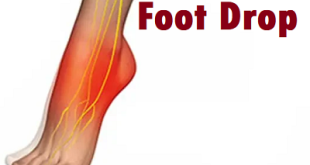Definition of brachial plexus injury
Brachial plexus injury is caused by excessive stretching, tearing, or other trauma to a network of nerves from the spine to the shoulder, arm, and hand. The brachial plexus is a network of nerves that conducts signals from the spine to the shoulder, arm, and hand. Brachial plexus injuries are caused by damage to those nerves. Symptoms may include a limp or paralyzed arm; lack of muscle control in the arm, hand, or wrist; and a lack of feeling or sensation in the arm or hand. Brachial plexus injuries can occur as a result of shoulder trauma, tumors, or inflammation.
There is a rare syndrome called Parsonage-Turner Syndrome, or brachial plexitis, which causes inflammation of the brachial plexus without any obvious shoulder injury. This syndrome can begin with severe shoulder or arm pain followed by weakness and numbness. In infants, brachial plexus injuries may happen during birth if the baby’s shoulder is stretched during passage in the birth canal.
The severity of a brachial plexus injury is determined by the type of damage done to the nerves. The most severe type, avulsion, is caused when the nerve root is severed or cut from the spinal cord. There is also an incomplete form of avulsion in which part of the nerve is damaged and which leaves some opportunity for the nerve to slowly recover function. Neuropraxia, or stretch injury, is the mildest type of injury Neuropraxia damages the protective covering of the nerve, which causes problems with nerve signal conduction, but does not always damage the nerve underneath.
Epidemiology
Reliable information on the incidence of traumatic brachial plexus injuries is difficult to find; the exact incidence is not known. Goldie and Coates suggested that 450-500 closed supraclavicular injuries occur each year in the United Kingdom.
A systematic review of the literature demonstrated that patients had a mean age of 26.4 years, 90.5% were male, and manual labor was the most represented occupation. The mean total indirect cost of traumatic brachial plexus injury in the Monte Carlo simulations was $1,113,962 per patient over the post-injury lifetime (median, $801,723; interquartile range, $22,740-2,350,979).
Types of brachial plexus injury
There are several types of brachial plexus injuries, which are categorized according to how the nerves are damaged and the severity of the damage.
Burners and stingers – brachial plexus neuropraxia: The nerves are stretched or compressed to the point of injury. These injuries are called burners or stingers because the main symptom is a burning or stinging sensation. They can also feel like an electric shock.
- Compression neuropraxia is the most common form and generally occurs in older people. The brachial plexus nerve root is compressed, usually by the rotation of the head.
- Traction neuropraxia is less common and tends to develop in adolescents and young adults, especially those who play contact sports. This injury occurs when the nerve is pulled.
Brachial plexus rupture: The nerve is torn, either partially or completely. Ruptures can cause severe pain, weakness, or paralysis in the shoulder, arm, or hand.
Brachial plexus avulsion: The root of the nerve is completely separated from the spinal cord. More severe than ruptures, avulsions often cause severe pain and can lead to permanent weakness, paralysis, and loss of feeling.
Brachial plexus neuroma: Nerve tissue that has been injured, such as from a cut during surgery, forms a painful knot of scar tissue called a neuroma.
Brachial neuritis: Also called Parsonage-Turner syndrome, brachial neuritis is a rare, progressive disorder that causes sudden, severe shoulder and upper arm pain and progresses from pain to weakness, muscle loss, and even loss of sensation. This syndrome usually affects the shoulder and arm, but it can also affect the legs and diaphragm.
Brachial plexus injury at birth (obstetric brachial plexus injury): Injury to the brachial plexus occurs in one to two newborns per 1,000. Larger babies in difficult vaginal deliveries are particularly prone to this injury, as are babies of mothers who have diabetes. These injuries can vary widely in severity and take one of two forms:
Erb’s palsy: A common injury of the upper brachial plexus nerves, causing numbness and loss of motion around the shoulder and an inability to flex the elbow, lift the arm, or bring objects to the mouth.
Klumpke’s palsy: A less common injury that affects the lower brachial plexus, leading to loss of motion or sensation in the wrist and hand.
Risk factors
- Shoulder dystocia (the baby’s shoulder being restricted on the mother’s pelvis)
- Maternal diabetes
- Large gestational size
- Difficult delivery needing external assistance
- Prolonged labor
- Breech presentation at birth
- Over half of brachial plexus Injuries have no known risk factors
Causes of brachial plexus injury
The causes of brachial plexus injury may include:
- Large gestational size
- Breech birth
- Prolonged or difficult labor
- Vacuum or forceps-assisted delivery
- Twin or multiple pregnancies
- History of a prior delivery resulting in brachial plexus birth injury
Once your child’s pediatrician has made a diagnosis, it’s safe to wait up to four weeks for a comprehensive evaluation by a pediatric orthopedist or brachial plexus specialist.
Brachial plexus injury symptoms
A brachial plexus injury usually affects only one side of the body. The severity of the injury can depend on a number of factors, including the force of the injury and how many nerves are injured. Since nerves have different functions, which ones are injured also matters.
In general, symptoms may include:
- Loss of sensation
- A change in your ability to move one of your shoulders, arms, or hands
- Weakness or paralysis in the arm or hand
- Pain in the neck, arm, or hand
- A feeling like an electric shock going down one arm
Even if your symptoms seem minor, it’s important to talk to your doctor. If you wait too long and find you need surgery, the delay could make a difference in your recovery.
Complications
Erb’s palsy and Klumble’s paralysis are complications of brachial plexus injuries that most often occur during difficult childbirths.
Some brachial plexus injuries resolve on their own with time. However, severe ones may lead to permanent disability.
- Erb’s palsy, which is a form of brachial plexus palsy affecting the upper and lower arm. Often resulting from a difficult childbirth, the condition affects the movement of the shoulder, arm, and hand. The particular posture that ensures is called ‘waiter’s tip deformity’.
- Klumpkle’s paralysis, where the lower roots of the brachial plexus are affected, leads to a ‘claw hand deformity’.
- Chronic pain that results from nerve damage.
- Loss of sensations: may lead to accidental burns.
- Atrophy of muscles, stiff joints.
- Permanent disability.
Diagnosis and test
A healthcare provider will examine your hand and arm. He or she will test for feeling and function to help diagnose this type of injury.
These are other diagnostic tests often used:
- Imaging tests, such as an MRI scan or CT scan
- Tests to determine nerve function and electrical activity, including a nerve conduction study and electromyogram (EMG)
- X-ray of the neck and shoulder area
Treatment and medications
Can a brachial plexus injury heal on its own?
Brachial plexus injuries don’t always need treatment. Some people, particularly babies with a brachial plexus birth injury or adults with neuropraxia, recover without any treatment, though it can take as long as several weeks or months for the injury to heal.
Certain exercises can help with healing and function, but more severe injuries may require surgery. Prompt examination by a health care provider is essential after any suspected brachial plexus injury.
Nonsurgical Treatment for Brachial Plexus Injuries
Mild brachial plexus injuries respond well to a combination of nonsurgical treatment options. Your doctor may recommend one or all of the following:
Physical therapy to learn exercises that may help restore function in the arms and hands and improve range of motion and flexibility in stiff muscles and joints.
Corticosteroid creams or injections to help manage pain during healing.
Assistive devices such as braces, splints, and compression sleeves.
Medications to help manage pain.
Occupational therapy to work on practical skills like dressing and cooking in cases that involve severe muscle weakness, numbness, and pain.
Surgical Treatment of Brachial Plexus Injuries
Brachial plexus injuries that fail to heal on their own may require surgery to repair the damage. Nerve tissue grows and heals slowly, so it can take months to years to see the results of brachial plexus surgery.
Brachial plexus surgeries should take place within six months of injury for the best chance at recovery. Procedures your surgeon might recommend include:
Nerve repair: Reconnecting a torn nerve.
Neurolysis: Removing scar tissue from the injured nerve to improve function.
Nerve graft: Using a healthy nerve from another part of the body to connect two ends of a separated nerve, guiding the healing process.
Nerve transfer: Attaching a less important but still functional nerve to the damaged nerve, creating a framework for new growth.
Tendon and muscle transfers: moving a less important tendon or muscle from one part of the body to the arm to restore function.
Your health care provider can help you decide if you are a good candidate for surgery.
Prevention of brachial plexus injury
Although damage to your brachial plexus often can’t be prevented, you can take steps to reduce the risk of complications once an injury has occurred:
For yourself: If you temporarily lose the use of your hand or arm, daily range-of-motion exercises and physical therapy can help prevent joint stiffness. Avoid burns or cuts, as you may not feel them if you’re experiencing numbness.
If you’re an athlete who has experienced injuries to the brachial plexus area, your doctor may suggest you wear specific padding to protect the area during sports.
For your child: If you’re the parent of a child with a brachial plexus palsy, it’s important that you exercise your child’s joints and functioning muscles every day, beginning when your baby is just a few weeks old. This helps prevent the joints from becoming permanently stiff and keeps your child’s working muscles strong and healthy.
 Diseases Treatments Dictionary This is complete solution to read all diseases treatments Which covers Prevention, Causes, Symptoms, Medical Terms, Drugs, Prescription, Natural Remedies with cures and Treatments. Most of the common diseases were listed in names, split with categories.
Diseases Treatments Dictionary This is complete solution to read all diseases treatments Which covers Prevention, Causes, Symptoms, Medical Terms, Drugs, Prescription, Natural Remedies with cures and Treatments. Most of the common diseases were listed in names, split with categories.







